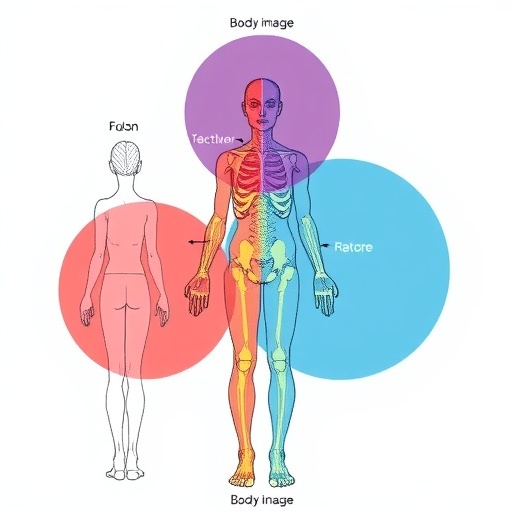In the realm of sports science and hormonal research, a groundbreaking study by Barsky and Monks has shed light on the intricate relationship between androgens, body composition, and athletic performance. The role of androgens, a group of hormones that includes testosterone, is pivotal in understanding how physiological responses to exercise can vary greatly among individuals, particularly in the context of sex differences in hormone levels and receptor expression. This research paves the way for a deeper understanding of how these hormones affect not only muscle mass and strength but also overall athletic performance and adaptation to various training regimens.
Androgens are often associated with muscle growth and strength due to their anabolic properties. Testosterone, the most well-known androgen, facilitates protein synthesis, which is a critical process for muscle development. However, the relationship between androgens and body composition extends beyond simple muscle gain; it also encompasses factors such as fat distribution and metabolic rate. This study explores how both global and tissue-specific androgen receptor expression can significantly influence these variables, effectively highlighting a complex interaction that can determine individual fitness outcomes.
The research underscores that the presence of androgen receptors in various tissues, including skeletal muscle and adipose tissue, allows androgens to exert their effects in specific contexts. For instance, enhanced androgen receptor expression in muscle tissues has been linked to improved strength and hypertrophy. In contrast, when androgens influence fat tissues, the outcomes can vary, potentially contributing to differences in fat distribution between males and females. This nuanced understanding reveals the potential for personalized exercise and nutritional strategies to enhance athletic performance based on an individual’s hormonal profile.
Moreover, Barsky and Monks emphasize the implications of their findings for exercise adaptation. The study shows that androgens not only facilitate muscle growth but also play a significant role in the body’s ability to adapt to the stresses of exercise. This hormonal influence can determine how quickly an individual might recover from workouts, how effective a training program will be, and even the long-term sustainability of physical performance. This aspect is particularly vital for athletes who engage in intense training cycles, as optimizing androgen levels could be crucial in minimizing injury and enhancing recovery times.
The impact of androgens on performance extends to endurance sports as well. The research indicates that while strength athletes may primarily benefit from the anabolic effects of androgens, endurance athletes could see improvements in their performance and recovery as well. This dual role highlights the essential nature of androgens in various athletic disciplines, suggesting that these hormones should be considered when developing training protocols and recovery strategies for athletes of all types.
In addition to athletic implications, Barsky and Monks address how age and sex differences can affect androgen levels and receptor expression. The study highlights the well-documented decline in testosterone levels as men age, which can translate to changes in body composition, including increased fat mass and decreased muscle mass. Women, while having lower overall testosterone levels, also experience fluctuations in androgen levels throughout their menstrual cycles, which can impact performance and recovery. Understanding these variations ensures that training and nutrition can be appropriately tailored to maximize outcomes based on hormonal status.
The findings bring to light the potential for interventions that could enhance androgen levels or improve receptor sensitivity. This opens avenues for athletes and trainers looking for edge advantages in competition. Nutritional strategies, such as dietary adjustments or supplement regimens, might play a role in optimizing androgen function. Moreover, understanding how lifestyle factors, including sleep and stress management, affect hormonal health presents further opportunities to enhance performance naturally.
However, the study also invites a broader discussion on the ethical implications of manipulating androgen levels in sports. The debate surrounding performance-enhancing drugs, particularly those related to testosterone, has been a contentious issue in athletic circles. Barsky and Monks’ research highlights the need for responsible and informed discussions around hormone manipulation, acknowledging the thin line between enhancement for performance and the risks associated with doping.
As science continues to unravel the complexities of hormone interactions within the body, this research reinforces the importance of ethical considerations in sports and fitness. Athletes, coaches, and sports organizations face the challenge of promoting fair competition while still recognizing the vast potential of hormonal research to enhance performance and recovery techniques.
In conclusion, Barsky and Monks’ study serves as a pivotal resource in our ongoing quest to understand the relationship between androgens and athletic performance. By considering the individualized nature of hormonal responses, we can move towards more customized approaches to training and recovery. The nuanced findings regarding receptor expression and its effects on body composition and exercise adaptation offer vital insights that could redefine training paradigms for athletes in various disciplines.
As we synthesize this information, it becomes clear that hormone research is not merely academic; it possesses real-world implications that could revolutionize how we approach training in sports. The integration of hormonal profiling in sports science reflects an essential evolution in understanding what drives human performance.
Subject of Research:
Article Title:
Article References:
Barsky, S.T., Monks, D.A. The role of androgens and global and tissue-specific androgen receptor expression on body composition, exercise adaptation, and performance. Biol Sex Differ 16, 28 (2025). https://doi.org/10.1186/s13293-025-00707-6
Image Credits: AI Generated
DOI:
Keywords:




